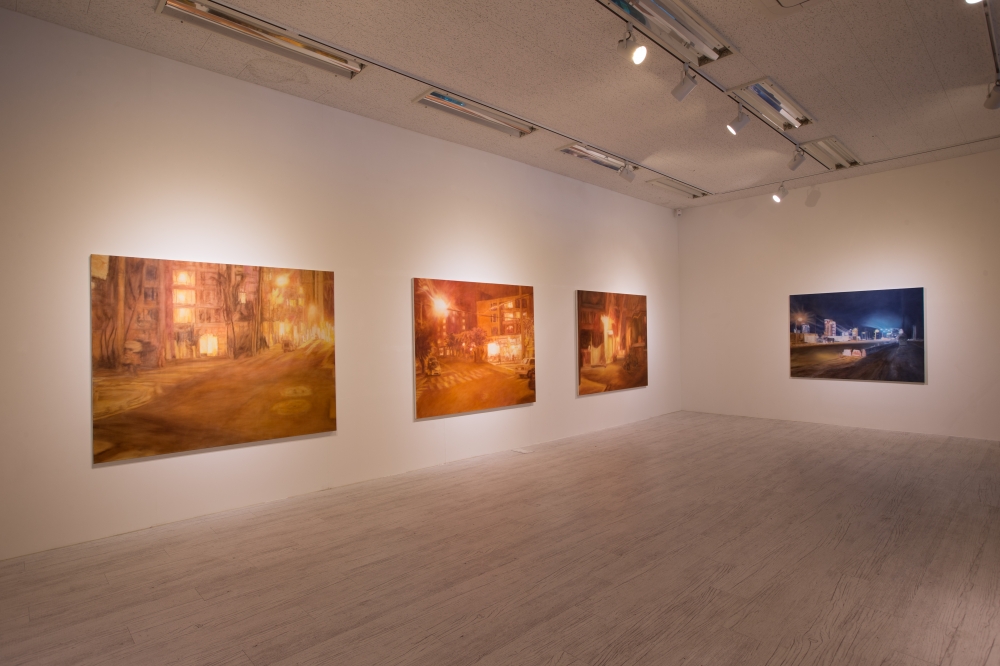사진최은경_전시전경
 최은경_전시전경
최은경_전시전경
- 등록번호 : 780
- 장르 : 유화
- 작가명 : 최은경
- 자료생성일 : 2016-05-19
- 분류 : 입주예술가, 전시
- 태그 : 2016프리뷰전, 최은경
-
요약설명 :
골목을 정물(Still Life)처럼 바라보기
골목은 내밀한 사적 영역에서 공적 공간으로 이행하는 중간통로이자 문지방이다. 어릴 적의 추억과 꿈 등, 기억의 잔상들이 사회적 정서로 어스름한 섬광처럼 남아있는 장소이기도 하다. 꿈에서 깼을 때 뭔가 잔상 같은, 우리의 일상이나 생활공간이 꿈의 영역으로, 꿈의 이미지로 변화하는(할 수 있는) 구역인 것이다. 그 잔상의 휘발성과 불안정성을 담으려는 의도로 중간지대, 어느 쪽도 구별하기 힘든 지점, 밤과 낮의 경계 등과 연결하여 그 시공간의 ‘어스름’으로 표현한다.
바깥 풍경을 골목처럼 거닐기, 꿈꾸기
‘밤’은 공간적이고 입체적이라기보다는 그림의 프레임 위에 평면적으로 얹혀 있는 것처럼 평평하고, 납작하다. ‘밤’의 사실성은 (실제적인 21세기적 우리 삶의 한 단면인 동시에) 우리 삶의 유형 속에 유형화되지 않은 특히, 꿈의 판타지, 무의식 속에 내재되어 있는 회복에 대한 새로운 열망(욕망)의 예감, 즉 구체적 꿈꾸기이다. 그러나 그것은 이룰 수 없었던 꿈이라는 자각에서 비롯된 고통을 기반으로 하는 네거티브 자각몽이다.
Looking at an alley as if it’s a still life
An alley is a passageway and the threshold from a private space to a public space. It is also a place where childhood memories, dreams and afterimages remain like dim flashes of light as social sentiments. It is a territody similar to afterimages of dreams, where our daily routines or living spaces (may) be transferred to the realm of dreams and becoming images that belong there. In an attempt to represent the volatility and unstability of the agterimages, the ‘ dusk’ of the space and time is depicted in connection with the middle zone, a plcae where nothing is discernible, the boundary betwwn dat and night, and so on.
Strolling along the outdoor landscape as if in an alley, and dreaming
The reality of the ‘night’ is (an aspect of our actual life in the 21st century and, at the same time) the fantasy of a dream not yet materialized in our life, the premonition of a new aspiration (desire) for recovery dwelled in our subconscious, or specific dreaming. It is, however, a negative lucid dream in which one is painfully aware that it cannot be realized.